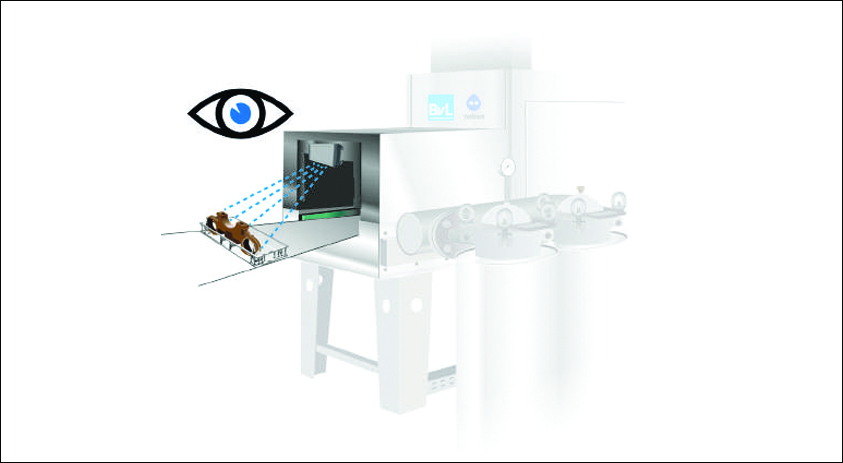Importance of barrier fluid pressure in double seal operation
January 10, 2017 5:36 pm
This article gives you an idea about the difference between buffer plan (unpressurised) and Barrier Plan (pressurised). It explains how barrier fluid pressure helps to support double (dual) mechanical seals in a pressurised plan and increases MTBF (Mean Time Between Failure) of seal.
The use of dual mechanical seals in industries has increased due to its protection against accidents caused by premature seal failures, sealing critical applications and more importantly environmental norms. In order to run dual seals, a suitable API Plan/Seal support system is a must. Study shows that several double seal failures were majorly due to improper operation of API Plans. Hence it is most important to know about API Plans and its operation to run the seals successfully. Barrier fluid pressure is one of the major parameters that need to be looked in when using a pressurised plan.
According to API (American Petroleum Institute) 682 Standard, API Plans for dual seals are segregated majorly into two varieties. Unpressurised fluid circulation (API Plan 52, 72) and pressurised fluid circulation (API Plans 53 A/B/C, 54 and 74). The terms ‘Buffer fluid’ and ‘Barrier fluid’ are used to describe lubricating medium. Buffer fluid implies when the lubricating medium is unpressurised or pressurised below the pump seal chamber pressure. The term “Barrier fluid” implies when the lubricating medium is pressurised above the pump seal chamber pressure. Gases are also used as buffer or barrier fluids depending on the design of the mechanical seals. This article mainly focuses on liquid barrier fluids.
From the name itself the major difference between pressurised and unpressurised fluid circulation plans i.e. Pressure of the lubricating media can be identified.
A barrier fluid is used in pressurised dual seals to isolate the pump processed liquid from the environment. As Barrier fluid pressure is above stuffing box pressure and pressure flows from high region to low region, Barrier fluid will penetrate in between the seal faces and then into the process. Fig. 1 shows barrier fluid circulation when operated at a pressure higher than stuffing box.
Barrier fluid circulation at a pressure higher than stuffing box pressure
This concept helps in the use of pressurised plan in several critical applications such as:
Where no leakage of process fluid to atmosphere can be tolerated e.g. hazardous, toxic, inflammable liquid. Due to high pressure of barrier fluid, it will not allow process liquid to come between inboard seal faces or atmosphere.
Where process liquid is unsuitable as a lubricant for inboard seal faces.
Process fluids like slurries, abrasive liquids, dirty liquids or polymerising liquids are not suitable for face lubrication. As they don’t have lubricating property, if it enters between the seal faces, it will damage the faces and cause premature seal failure. Hence sealing these types of applications is highly critical and it can be only sealed by avoiding process fluid coming in between the seal faces. This is achieved by maintaining barrier fluid at a pressure higher than the stuffing box.
Buffer fluid circulation at a pressure below stuffing box pressure
shows barrier fluid circulation when operated at low pressure than stuffing box pressure. In this case it becomes buffer fluid. In any case if the barrier fluid pressure is lost below stuffing box pressure, then converse will takes place. Once barrier fluid pressure is lost, although it is double seal we cannot get the said advantages above. Hence barrier fluid pressure is very important.
Barrier fluid pressure can be controlled and monitored by pressure instruments like switches or transmitters.
Now the question is how much barrier fluid should be maintained? It is recommended that Barrier Fluid Pressure should be a minimum of 1.5 barg to 2 barg above the stuffing box pressure. For API Plan 53B, the value is higher and in general it is kept at 4 barg above the stuffing box pressure. It is calculated based on leakage rate of both pairs of seal faces and barrier fluid refilling frequency.
Selection of the correct sealing system requires the proper choice of a suitable barrier or buffer medium. The question of which barrier or buffer medium is the right one is therefore very important.
The fact is that unsuitable barrier or buffer media may significantly reduce the life of seals and have a negative effect on the process. There are two major types in barrier fluids available, namely aqueous and non-aqueous.
Following criterias are important in selecting a suitable barrier/buffer medium:
• Good lubrication properties
• Good specific heat capacity
• No tendency to deposit
• Suitable viscosity
• High resistance to wetted materials
• High ageing resistance
• Free of solids
• Suitability with the process media
• Non hazardous substance
• High ignition temperature and high flash point
• Sufficient gap between the boiling point and the process temperature
• No tendency to foam
• Easy availability
• Each and every parameter above has its siginficance while selecting barrier or buffer fluid medium.
Following are some of the barrier or buffer fluids generally used in industries: Clean water, glycol water mixture, glycerine, mineral oils, synthetic oils, silicone oils, ethanol, methanol, heat transfer fluids, nitrogen and air.
Conclusion
It is important to monitor and maintain Barrier fluid pressure while operating dual seals with pressurised plans.
Authored by:
Mahesh Satrasala
Assistant Manager- Tehnical & Applications
AESSEAl India Pvt Ltd
Email: aesseal@aesseal.in
Cookie Consent
We use cookies to personalize your experience. By continuing to visit this website you agree to our Terms & Conditions, Privacy Policy and Cookie Policy.

















 English
English Hindi
Hindi